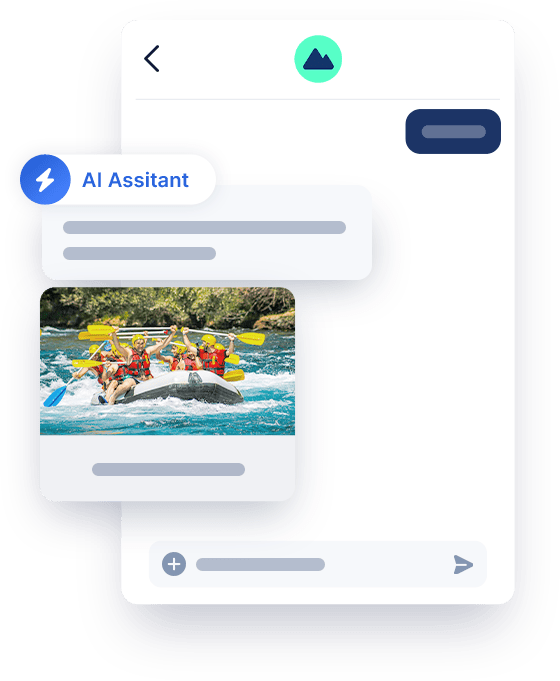Best Practices for Implementing Messaging for Customer Service

It has been established that messaging is the highest rated contact method for customer satisfaction compared to all other communication channels. (eWeek). However, like other service channels, messaging comes with a unique set of considerations when implementing it into your customer service centers. This is why it is important to do a little prep work to help ensure successful adoption. Three things to consider for a smooth implementation:
- Business Metrics and Goals
- Staffing and Training
- Customer Adoption
Business Messaging Best Practices
Since most consumers communicate via phone and text, industry leaders are finding new ways to adapt by using high-quality messaging apps and software. Business messaging is a quick and convenient way to interact with customers in today’s competitive market. These four messaging best practices can help businesses transition smoothly to text communication.
1. Business Metrics and Goals
Aligning your goals for the messaging channel with your business objectives is the first step. Make sure that there is alignment with all stakeholders. Everyone should know why the company is offering messaging and the intended outcomes. The best way to do this is to establish goals and baseline metrics from the beginning. Some key goals and metrics would include:
Business Metric: Cost Reduction
- Goal 1: Offload phone calls to messaging channel
- Goal 2: Increase agent productivity
- Metrics: Monthly calls received, monthly calls presented to the agent, cost per contact per channel, # of inquiries per channel
Once the messaging channel is opened up to your customers, there will be a progressive transition from phone calls to messaging, typically in the 10-20% range to start, growing over time. Not only that, agents that work the messaging channel will be able to handle multiple conversations at once versus phone calls that must be 1-1. We have found, depending on the complexity of the inquiries, agents can handle approximately 10 simultaneous conversations. With the ability to include images and videos over messaging, agents can understand and solve problems faster. This increased agent productivity and efficiency, coupled with the shift from phone to messaging, results in significant cost savings for your organization.
Business Metric: Employee Productivity
- Goal 3: Improve time to resolution
- Metrics: Number incidents handled by day by agent, first contact resolution rate, time to first response
The pure nature of messaging can allow for faster interactions. They may not always be shorter per se, due to the pace the consumer engages, however the time it takes for the agent will likely be shorter than a phone call. Conversations are direct and to the point. Because agents can easily manage multiple, simultaneous conversations, they are more productive than if they have to handle phone calls or emails. With the addition of images/video agents can understand and solve problems faster. Likewise, agents can send multi-media back to the customer allowing them to see the solution
Business Metric: Customer Satisfaction (CSAT)
- Goal 4: Increase CSAT by 5 points
- Metrics: Customer satisfaction survey results, employee satisfaction results, resolution rate
The consumer is one of the most important factors for business representatives to consider when they implement new marketing or communication strategies. Research suggests that about 96% of Americans own a mobile phone, which means mobile can be a reliable way to stay in touch with customers. What matters most is that those consumers are satisfied after each purchase. A business can determine customer satisfaction by using the results of a CSAT score.
Retailers can use messaging apps and unified communications solutions to evaluate customer value perception. This may include taking surveys and performing check-ins with consumers post-purchase. It’s possible to build up a CSAT score and find areas of improvement by collecting feedback from customers about push notifications and instant messages. With access to this essential data, business leaders can work toward solutions that allow them to provide the best possible customer experience. A retailer leader can also measure CSAT scores by surveying the satisfaction of service agents.
2. Staffing and Training
Staffing for a new channel like messaging is not as daunting as it seems. A great start is to gauge your current call volume. You can generally expect 10-20% of customers will select messaging over making a phone call once you make it known that it is available. One popular option is to assign a set of agents to a single “live” channel, such as messaging, and then supplement their time with email. Some other best practices include:
- Messaging Etiquette: If you are using phone agents to now be messaging agents, be sure to test their writing skills. Depending on the demographics of your customer base, agents may need to adjust their voice to be more or less formal. Additionally, their style of writing may require proper language use, which includes spelling and grammar, or they may need to freshen up on their texting shortcuts. Not only that, it may be wise to also consider a policy for emoji usage. The decision should be driven by the desired voice and persona of your brand.
- Staff Training: There is not much training required at all for agents to step in and handle the incoming messages, particularly if you select a messaging solution that seamless integrates into your existing CRM solution. We all text multiple times a day and this is no different. Something to focus on instead are any pre-built messages that can be sent and having a small library of those available to leverage. For example, a standard greeting, response to an order status inquiry can be written ahead of time as pre-built snippets. Agents can then use shortcuts to quickly respond to common questions.
- Access to other applications – Generally you will have the choice to integrate messaging into the primary application agents use or add messaging as a separate channel. Either way, be sure to take advantage of the messaging solution’s user interface. Quickly integrating one or more applications will save agents invaluable steps and time. For example, if agents need to access an order system or billing system or a knowledge base for nearly every interaction, make sure those are integrated into the messaging interface to eliminate clicks and save time.
3. Ensure Customer Adoption With Unified Communications
Finally, and most importantly, you need to let your customers know that messaging is now available. Some great ways to start are:
Inbound Communications
- Phone
- Inform customers as they are actively engaging with your organization
- It is easy to let customers know they can now text or message your customer service team while they are on hold or as an intro message before routing them to the appropriate queue.
- Even better, you can give customers the option, while they are in the IVR, to initiate a text instead to resolve their inquiry.
- Website/In-Apps
- Place the offer to message first and foremost on your mobile site, not just on the contact page.
- Add the text button to both the Contact Us and Customer Service areas of your website.
- On the main website, update any references to your phone number to include “Call or Text”.
- Social Channels
- You are likely ahead of your competition when it comes to adopting messaging, so promote this new offering on your social channels
- Turn on Facebook Messenger and let customers know they can reach you with questions
Outbound Communications
- SMS: The obvious first step is to determine if you would like to proactively communicate via SMS with your customers in addition to offering messaging as a support channel. If so, this is a fantastic opportunity to shift from marketing blasts to conversations with your customers.
- Email: Many of our clients share the adoption of messaging as a way to engage with customers through their outbound email communications by including it in a newsletter or other promotion
- Press Release: Many brands pride themselves on being innovative and leading their competition, so promoting this publically to demonstrate their commitment to the customer experience sets them apart
- Direct Mail: Depending on your demographic, a messaging announcement can be included on a planned flyer
- Registration: When customers sign up, register, or provide their personal information to you, ask them for their mobile phone number and tell them they can now be identified in the case they have any issues or questions and want to message your company. If you plan to use it for outbound communications, be clear to state that and of course, follow the CSAM and other opt-in/out requirements.
4. Monitor Results and Improve Accordingly
Developing a communication system is all about increasing customer value. The best way to enhance a business strategy is to monitor and use results properly. Constant improvement is the key to success in a market that relies on personalized customer experiences. Effective monitoring and analysis help customer service agents gain experience, and they can offer the tools necessary to improve cost management.
Providing consumers with post-purchase updates, alerts, technical support, and special offerings is easier than ever with the help of instant message platforms. Business improvement starts with gathering data and then using the results of these new strategies to make productive updates and changes. With this method, retailers can determine which aspects of their plans work and which ones have more room for development.
Consider these three tips as you explore instant message platforms.
- Track Your Metrics: Industry leaders may use several metrics to measure the success of their messaging strategies. For example, the work time metric helps evaluate the amount of time that agents are spending with consumers and how long it takes for those consumers to receive answers to their questions. Other metrics to track include Net Promoter Score (NPS), upselling and cross-selling rates, and Revenue Per Customer (RPC). Keeping a record of these metrics from each month throughout the year will help customer service teams gather comprehensive, reliable data.
- Share Results With Your Team: Analyzing information and making improvements is a massive team effort. Sharing results with the team and collaborating on solutions can be a valuable and insightful way to make decisions based on a set of information. It allows agents to consider new ideas and discuss key takeaways of the relevant trends. In addition, it can help customer service representatives understand their own strengths and weaknesses. This gives them the power to think more critically about how they can improve their services via message and phone.
- Make Changes Based On Trends: The next step in the process is to create a plan with tangible goals. After they collect and analyze the information, it’s the responsibility of industry leaders to use this information productively. Creating a plan based on data from a communication platform allows industry leaders to improve efficiency, the timing of messages, agent performance, and presentation of information.
Get Started With Business Messaging
As you can see, once you establish your goals, the rest can fall into place rather seamlessly. Your team and your customers will truly appreciate the ability to communicate via this new channel.
In this series, we have talked about how important messaging is, how to select the best messaging vendor for you, and what to do when you are ready to implement – and we have enjoyed every minute of it! SMS, text, Facebook Messenger, and chat…we love it and live it. We have made our careers in helping drive improvements to customer service and the customer experience. Let us help you successfully add Messaging to your organization.




